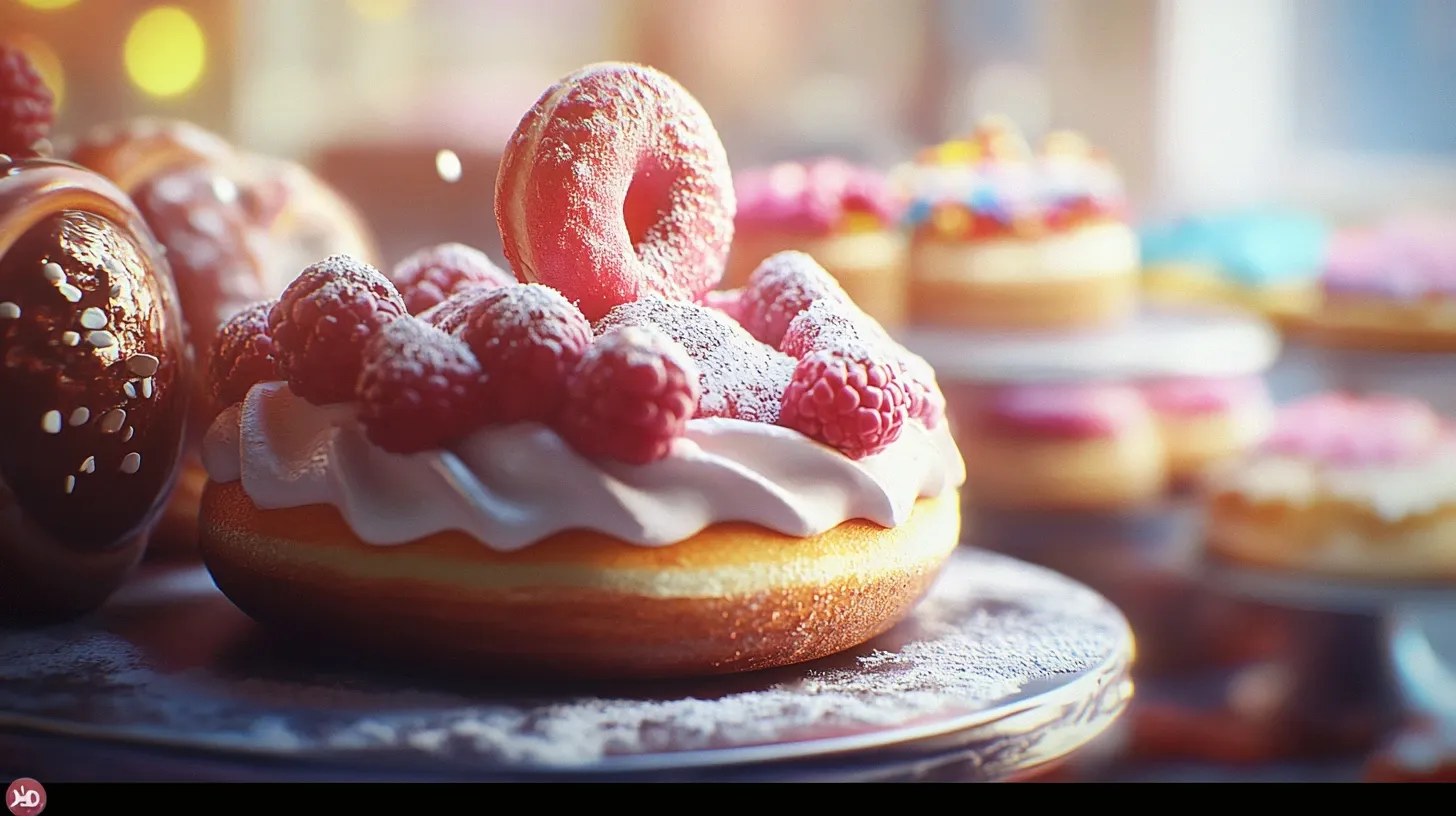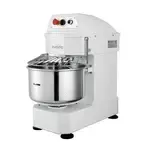
The Science Behind Baking
- Accurate Measurements: The Cornerstone of Every Great Cake
- Preheating and Oven Temperature Control
- The Role of Room Temperature Ingredients
- Essential Tools and Equipment
- Upgrading Your Baking Equipment
- Baking Tips for Beginners: Starting Off on the Right Foot
- What Is the Most Important Thing to Get Right in Baking and Pastry?
- Troubleshooting Common Baking Mistakes
- Final Thoughts: How to Be a Good Baker
When baking, it’s important to remember that unlike cooking, where improvisation can sometimes lead to delightful surprises, baking is a science. Every ingredient has a specific role, and even a small deviation can affect the outcome. The key to consistently good results lies in understanding and respecting these roles—this is one of the most crucial tips for baking. Accurate measurements, controlled temperatures, and proper mixing techniques are the foundational elements that can make or break your cake.
Accurate Measurements: The Cornerstone of Every Great Cake
A primary baking tip is to measure your ingredients with care. In baking, precision is everything. Even minor discrepancies in the ratio of flour, sugar, eggs, and leavening agents can lead to a cake that is too dense, overly moist, or fails to rise properly.
- Invest in a Digital Scale: Measuring by weight rather than volume can greatly improve accuracy. A digital scale helps you ensure that every ingredient is added in the precise amount required.
- Use Standardized Measuring Tools: If you prefer using cups and spoons, make sure they’re standardized. Level off dry ingredients with a straight edge to avoid excess flour or sugar, which can dramatically change the texture of your cake.
- Follow the Recipe Exactly: Especially when you’re a beginner, it’s essential to adhere to the recipe’s instructions. As you gain more experience, you can experiment with adjustments, but precision is key during the learning phase.
By embracing these tips for baking, you’re already on your way to being a good baker.
Preheating and Oven Temperature Control
Another critical baking tip and trick is ensuring that your oven is properly preheated. When baking, a consistent and correct oven temperature is necessary for even baking and proper rise. Here’s what you need to know:
- Always Preheat Your Oven: An oven that isn’t at the correct temperature can cause uneven baking. Preheating for at least 15 minutes allows your cake to start baking in an environment that supports proper chemical reactions.
- Invest in an Oven Thermometer: Even if your oven has a temperature setting, the actual temperature may differ. An inexpensive oven thermometer can provide an accurate reading, ensuring that your cake bakes evenly.
- Avoid Opening the Oven Door: Every time you open the oven, you lose heat and disrupt the baking process. If you must check on your cake, do so quickly to minimize temperature fluctuations.
Controlling your oven’s temperature is one of the basics of baking that both beginners and seasoned bakers alike need to master.
Mixing Techniques: The Art of Combining Ingredients
How you mix your ingredients can significantly impact the texture and overall quality of your cake. The method you choose—whether it’s creaming, folding, or beating—plays a pivotal role in the final product.
- Creaming Butter and Sugar: One of the most popular and essential techniques in cake baking is creaming butter and sugar together. This process incorporates air into the mixture, contributing to a lighter and fluffier cake.
- Mixing Dry and Wet Ingredients Separately: Combining dry ingredients separately from wet ingredients ensures that leavening agents are evenly distributed. When you finally mix them together, it helps avoid lumps and promotes a uniform rise.
- Be Mindful of Overmixing: Overmixing the batter can lead to a dense, rubbery cake. Once the ingredients are just combined, stop stirring. This is a crucial baking tip for beginners to remember; gentle folding preserves the air bubbles that are essential for a light texture.
By following these tips for baking, you’ll develop an intuition for mixing that makes all the difference in your finished product.
The Role of Room Temperature Ingredients
A simple yet often overlooked baking tip is to use room temperature ingredients. This is especially true for ingredients like eggs, butter, and milk.
- Enhanced Emulsification: Room temperature ingredients blend together more easily than cold ones, resulting in a smoother, more homogeneous batter.
- Better Rise: When ingredients are at room temperature, they react better with leavening agents, which can help your cake achieve the perfect rise and texture.
- Consistency in Flavor and Texture: Using ingredients at the same temperature ensures that your cake bakes evenly, reducing the risk of parts that are under- or overcooked.
For anyone wondering how to be a good baker, start by making sure your ingredients are at the proper temperature before you begin mixing.
Essential Tools and Equipment
Investing in the right tools is an often underestimated baking tip that can elevate your cake-making experience. Quality bakeware and tools not only simplify the process but also contribute to better results.
- Mixing Bowls and Measuring Utensils: A set of good-quality mixing bowls, spatulas, and measuring cups or spoons is indispensable. Consistency is key, so having a dedicated set can help maintain the accuracy of your recipes.
- Baking Pans: The type and size of your baking pans can influence how evenly your cake bakes. Make sure to use pans that are appropriate for the recipe and consider using non-stick options or lining them with parchment paper to prevent sticking.
- Cooling Racks: Allow your cakes to cool evenly by transferring them to cooling racks once they’re out of the oven. This prevents condensation from forming on the bottom, which could make your cake soggy.
Upgrading Your Baking Equipment
An often overlooked but equally important aspect of baking success is investing in quality baking equipment. Beyond the basics like mixing bowls and measuring cups, specialized tools can take your cake-making to the next level. For instance, a stand mixer simplifies the process of creaming ingredients and ensures that your batter is evenly mixed without overexerting your hand. Other essentials include silicone spatulas for effortless scraping of every bit of mixture, pastry brushes for precise application of glazes or egg washes, and specialty pans that suit different types of cakes. High-quality parchment paper and silicone baking mats not only promote even baking but also guarantee an easy release from pans, reducing the risk of damage to your beautifully baked cakes. Investing in these advanced tools can streamline your workflow, minimize common mishaps, and boost your confidence as you create delectable desserts.
Baking Tips for Beginners: Starting Off on the Right Foot
If you’re new to the world of baking, the prospect of making the perfect cake might seem daunting. However, with a few foundational baking tips for beginners, you can build your confidence and skill set.
- Read the Recipe Thoroughly: Before you even start measuring ingredients, read through the entire recipe. Understanding the sequence of steps and knowing what tools are needed can help prevent surprises during baking.
- Prepare Your Mise en Place: This French term, meaning “everything in its place,” is a must-do for successful baking. Gather and measure all your ingredients before you begin mixing. This not only saves time but also ensures that you don’t forget an essential component.
- Stick to Trusted Recipes: Until you’re comfortable with the nuances of baking, it’s wise to start with well-tested recipes. As you gain experience, you can begin experimenting with variations and new techniques.
- Learn from Each Bake: Not every cake will turn out perfectly, and that’s okay. Each attempt is an opportunity to learn and improve. Take notes on what works and what doesn’t—this is how you grow as a baker.
These practical tips for baking can transform a daunting task into a fun and rewarding experience.
What Is the Most Important Thing to Get Right in Baking and Pastry?
This is a question that often arises among both novice and experienced bakers. The answer is simple: precision. The most important thing to get right in baking and pastry is the balance between accurate measurements, proper temperatures, and correct mixing methods.
- Precision in Measurement: As we’ve discussed, every ingredient in your recipe has a role. The chemistry of baking relies on the correct ratios to ensure that your cake rises, holds moisture, and develops the desired texture.
- Temperature Control: From preheating your oven to ensuring that your ingredients are at room temperature, temperature management is a cornerstone of successful baking.
- Proper Mixing Techniques: Whether it’s creaming, folding, or beating, the way you combine your ingredients affects the final outcome significantly.
By mastering these aspects, you’ll be well on your way to creating consistently perfect cakes.
Troubleshooting Common Baking Mistakes
Even with the best baking tips and tricks at your disposal, mistakes can happen. Here are a few common pitfalls and how to avoid them:
- Dense or Heavy Cake: This often results from overmixing the batter or using ingredients that are too cold. Ensure that you mix just until the ingredients are combined and that all components are at room temperature.
- Cake Not Rising Properly: If your cake isn’t rising as expected, check the freshness of your leavening agents. Expired baking powder or baking soda can lead to flat cakes.
- Uneven Baking: Uneven baking may be due to an inaccurate oven temperature or using the wrong size pan. Invest in an oven thermometer and always use the recommended pan size to ensure even heat distribution.
- Dry Cake: Overbaking is a common culprit behind dry cakes. Use a toothpick test to check for doneness, and remove your cake from the oven as soon as it passes the test.
Each of these troubleshooting tips reinforces the idea that attention to detail is what makes baking successful.
Final Thoughts: How to Be a Good Baker
In summary, being a good baker isn’t just about following a recipe—it’s about embracing a mindset of precision, patience, and continual learning. The baking tips and tricks outlined above cover everything from accurate measurements and temperature control to mixing techniques and the proper use of tools. They represent the basics of baking that can transform even the simplest ingredients into a spectacular cake.
Remember, every master baker started as a beginner. With each attempt, you’ll learn a little more about the delicate balance required to create the perfect cake. Whether you’re preparing your first batch of cupcakes or aiming to perfect a classic layered cake, these baking tips for beginners—and for seasoned pros—will serve as a reliable roadmap to success.
So the next time you’re in the kitchen, armed with your digital scale, oven thermometer, and a well-practiced mixing technique, know that you have the knowledge and the right equipment to conquer any recipe. Trust in the process, learn from each bake, and soon enough, your cakes will not only look beautiful but taste incredible too.
Embrace these tips for baking, invest wisely in your baking equipment, and enjoy the journey of becoming a confident, skilled baker who creates delectable cakes every single time. Happy baking!





